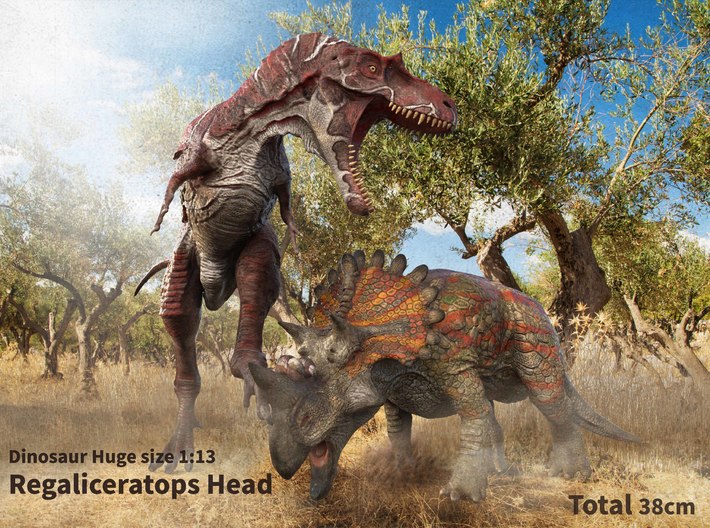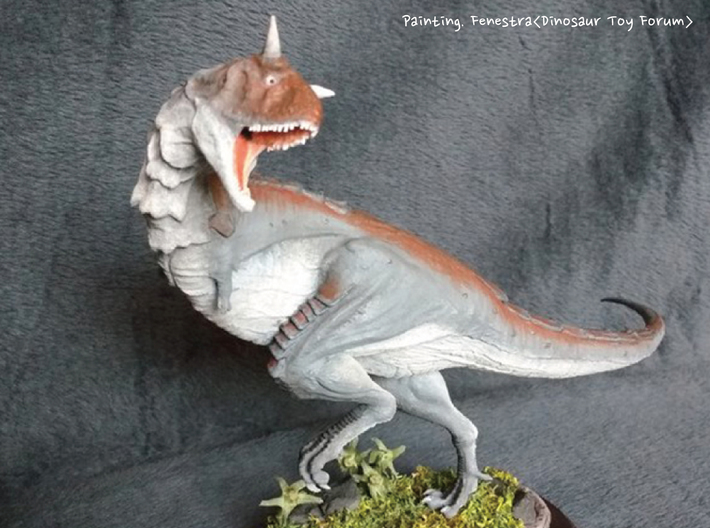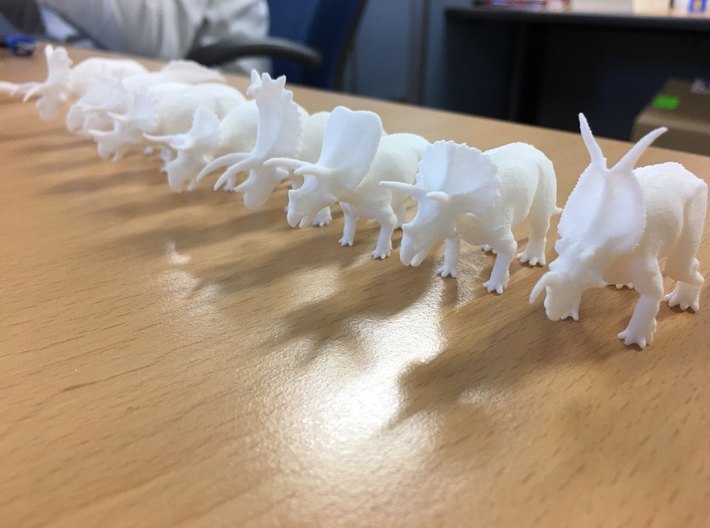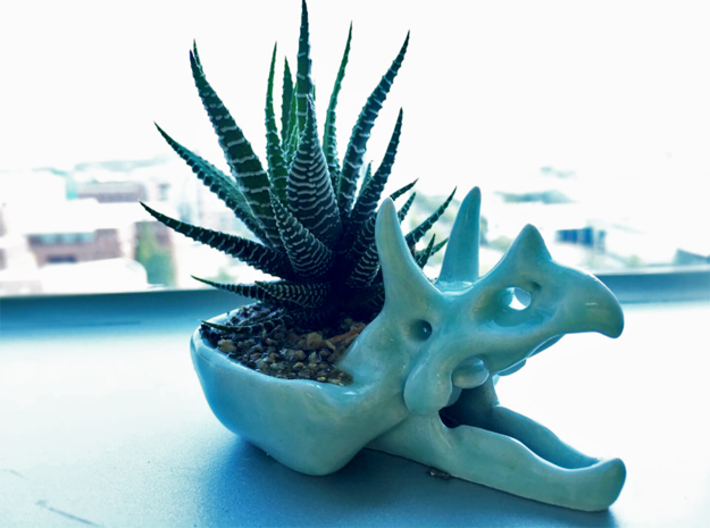
When I was a child, I wanted to be a paleontologist (a scientist who studies fossils) because I thought dinosaurs were absolutely incredible. My parents took me to the Museum of Natural History here in New York, where I discovered that paleontologists slept in tents during their digs — and promptly changed my mind on that career. Alas. Over twenty years later, at my post as PR Lead here at Shapeways, I stumbled upon Jin Kyeom’s Shapeways’ shop and felt positively giddy; Jin’s incredible 3D designs bring dinosaurs back to life (in the artistic sense, obviously). Jin lives in South Korea and works as an educator teaching people of all ages about dinosaurs.
Sifting through the array of models in Jin’s shop, it’s impossible not to let your imagination run a little wild, assisted by the fact that many of the designs are paired with an animation of the 3D modeled dinosaur in action (running, attacking – it’s all there). Due to my weakness for awkward-looking animals, the Carnotaurus model is my favorite – look at its tiny little arms! How does that dinosaur give hugs? Scratch its head? Do anything, basically?
Obviously wanting to fangirl, I asked Jin lots of questions about his models for this Designer Spotlight, so without further ado:
What do you use to guide the dinosaur designs?
Because dinosaurs are extinct, restoring them in a scientifically accurate way is not an easy task. I collect not only the skeleton pictures of the dinosaurs I want to make, but also skeleton data of similar animals. In addition, since extinct dinosaurs are steadily studied, I review the latest academic information. If the collected scientific data and my imagination are in the wrong combination, we can create a strange monster so I review skeletal data of existing animals that are similar to the dinosaurs that I want to restore. The skin patterns of reptiles, for example, are extremely beneficial in guiding the creation of my dinosaur designs.
I use ZBrush for dinosaur-making, Rhino3D for product structure, and KeyShot for rendering. When I prepare a lot of materials, I make the dinosaurs with a ZBrush. In the middle, I get advice from a dinosaur researcher in South Korea. So I try to make nice designs of scientifically accurate dinosaurs.
Your dinosaur designs are now incredibly complex and highly detailed. How long did it take you to master 3D design?
I have been studying ZBrush since 2011 and have been using it until now. In the beginning, my ability was a mess. Recent dinosaurs I have made are better in design and scientific knowledge than my past dinosaurs.
The dinosaurs I had studied and worked on for about two years were the first to receive praise. While I’m much more knowledgeable than when I first started, I continue to study, learn, and strive to improve my skills because there’s always room for growth.
How long does it take to model each design?
Typically, I invest a week to design one dinosaur, but it’s a continuation of a long process of research, collecting data, and consulting experts. When the print has been completed, the work is post-processed with paint.
Check out Jin’s shop – it’s a very realistic-looking blast from the past (which is also what probably killed the dinosaurs, womp womp). There are also Jin’s adorably cartoonish baby dinos in the New Breeding Kit section, for all your cuteness needs.






